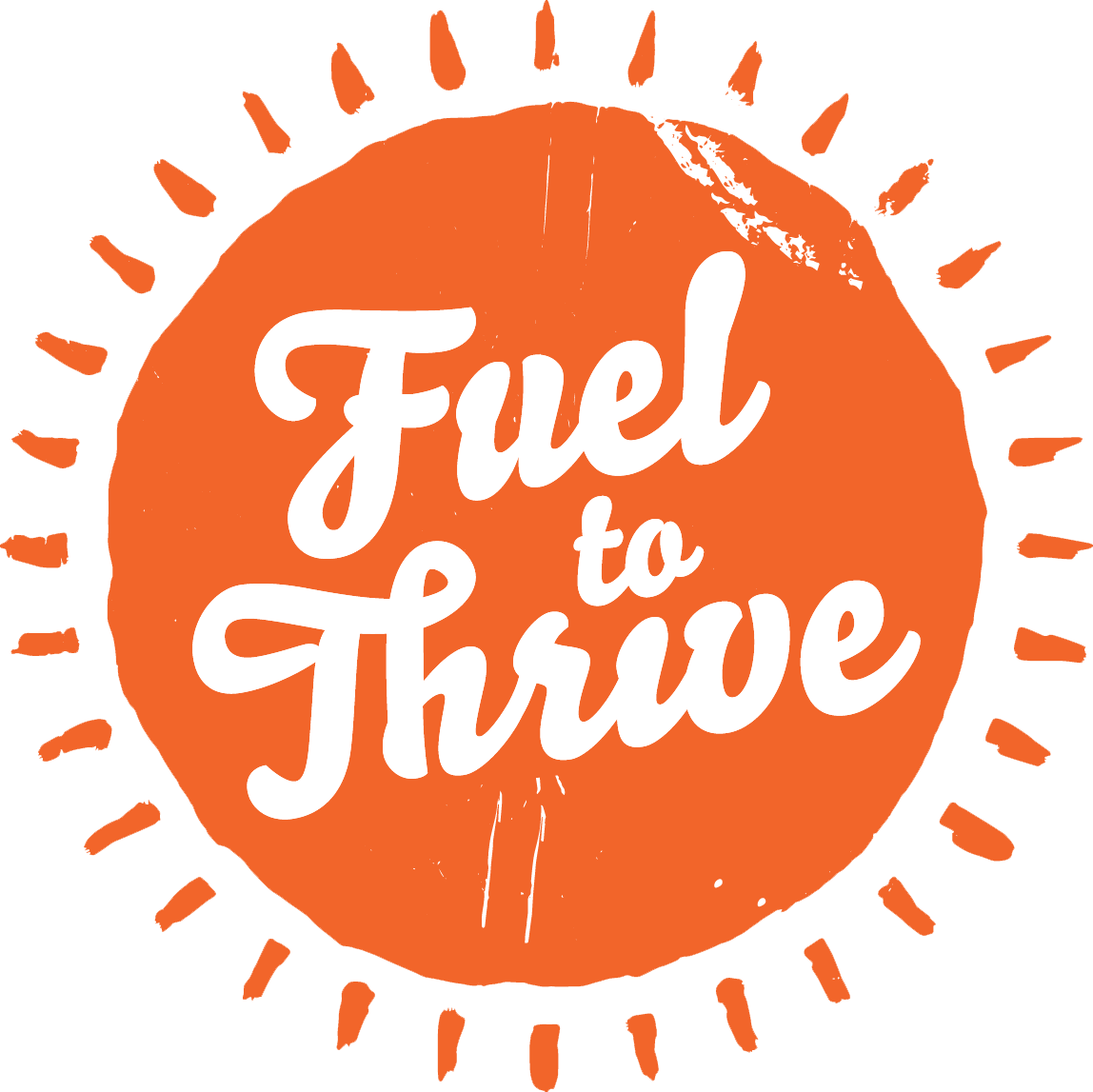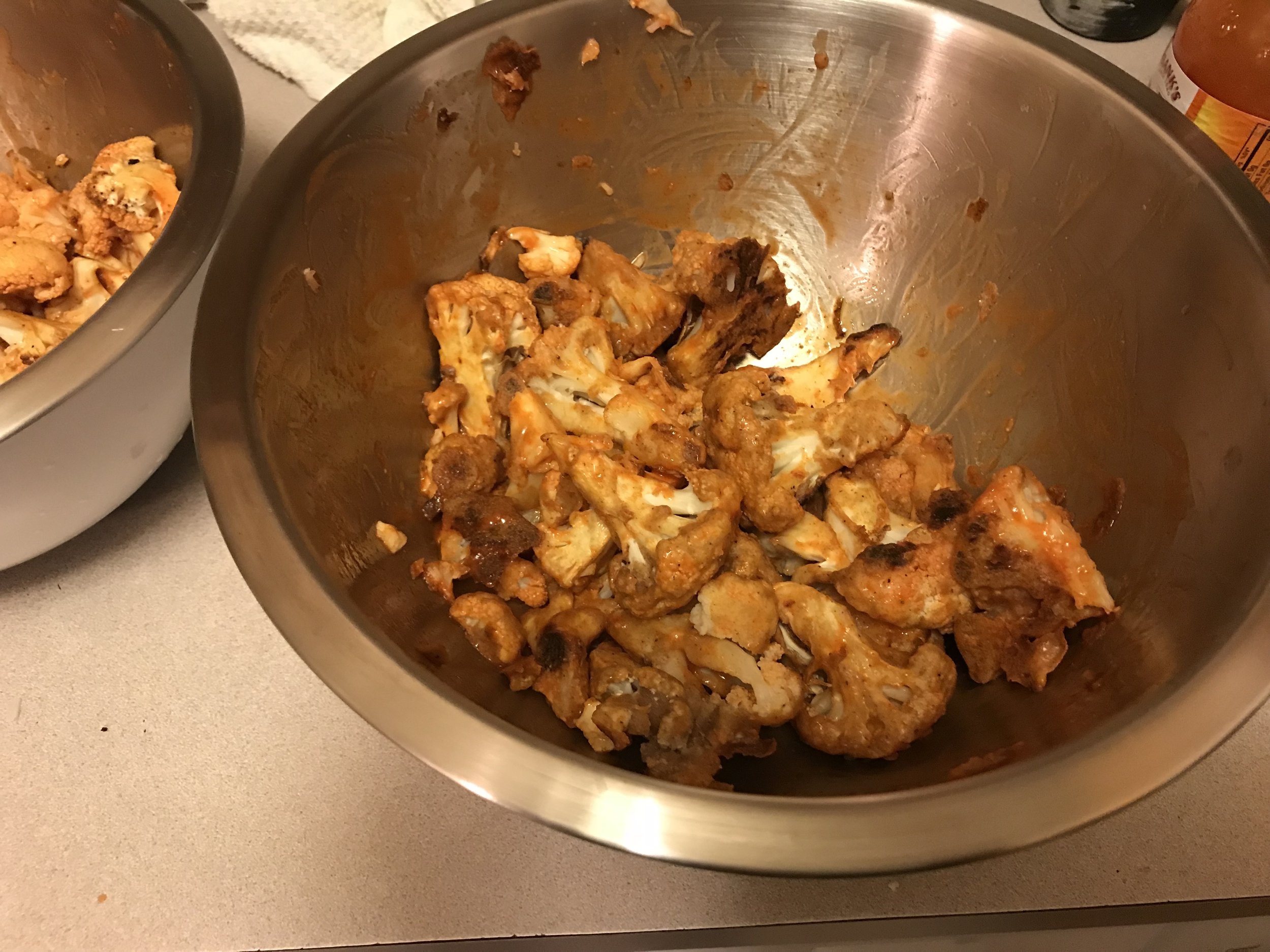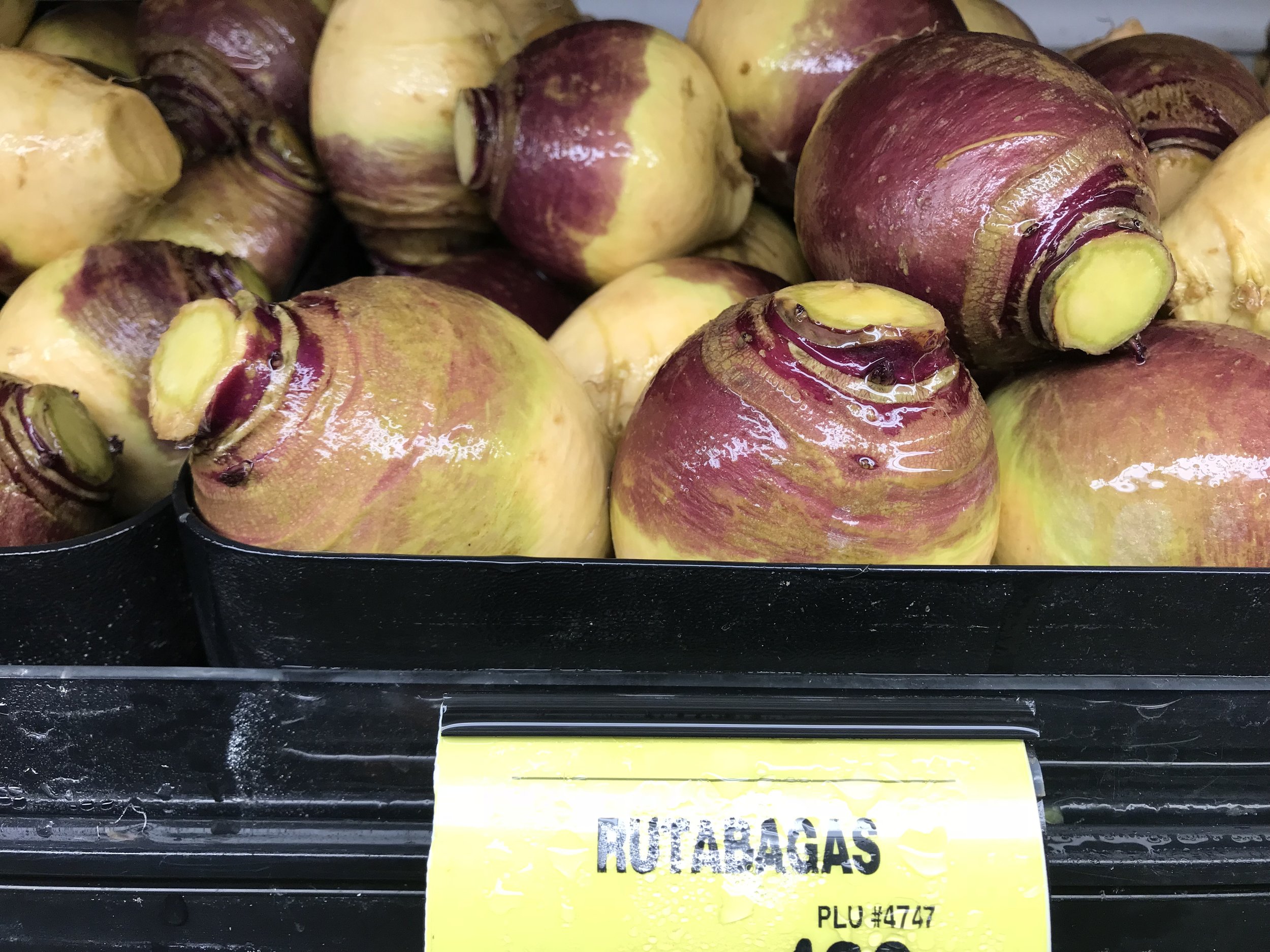Eat Seasonally: March Edition
March is always an odd month. You never know what the weather is going to be and deep down you are anticipating the nice weather and sunshine coming but still getting hit with random cold weather and snowstorms... or at least that has been my experience here in the Northwest. I feel the same odd tension with food choices- I still crave the warm comfort foods from winter but also want to turn on the grill and start exploring salads and warm weather foods.
This month's recipe contains a bit of both winter comfort and fresh warm weather vegetables. The comfort comes from the bacon- YUM! And the vegetables highlighted this month are peas, asparagus, and sugar snap peas. I have decided this salad will be my new go to for potlucks and parties because it is definitely a crowd pleaser.
Here is some fun information about the vegetables:
Asparagus: is full of various phytonutrients and antioxidants. One to mention is called asparagusic acid which causes the asparagus smell to show up in your urine. Everyone metabolizes this in various ways, so not everyone can smell the resulting chemical in their urine. The breakdown of this chemical also plays a roll as a cofactor in aerobic metabolism. Plus its delicious!
Peas: peas are a part of the legume family. Research has shown that peas contain all sorts of antioxidants. One in particular is called coumestrol- which has shown to benefit our stomach health and specifically reduce the risk of stomach cancer. Peas also have a high amount of protein for a vegetable (8-10g per cup). They are full of fiber and actually contain omega-3 fatty acids as well! All of these attributes make peas a strong fighter against inflammation and other chronic diseases.
Sugar Snap Peas: are unique in the fact that they provide a significant amount of iron for a vegetable. Iron is better absorbed with Vitamin C, which sugar snap peas also contain a significant amount of. This means you'll get more bang for your buck in iron absorption when choosing sugar snap peas!
Okay now for the recipe:
Asparagus and Peas with Warm Tarragon Vinaigrette:
Ingredients:
2 cups peas
1 pound sugar snap peas, cut in thirds
1 bunch of asparagus, bottoms trimmed and stalks cut in thirds
5 pieces bacon
3/4 cup shallots (1 large shallot), diced
3 TBSP fresh tarragon, finely chopped
2 TBSP white wine vinegar
1 tsp Dijon mustard
1/2 tsp salt
1/2 tsp pepper
zest of 1 lemon
How to:
In a large saucepan, bring water to a boil. Chop sugar snap peas and asparagus. Once water is boiling, place vegetables in water fro 3 minutes. Drain and rinse under cold water and set aside.
Meanwhile, cook the bacon in a saute pan. Once cooked, set aside. Pour off all but 1 TBSP of the bacon grease.
Add shallots to the saute pan and cook until they begin to brown. Add vinegar, mustard, and tarragon. Quickly mix and then add vegetables to pan. Mix until coated. Then place in a bowl.
Mix in salt, pepper and lemon zest. Break up the bacon into bits and mix in. Enjoy!!
We served ours with grilled steak seasoned with Spiceology's Cowboy Crust Seasoning and farro.
Eat Seasonally: February Edition
Whew! February has come and gone pretty quickly! I wanted to add a post highlighting February's Seasonal Produce and a favorite seasonal vegetable: cauliflower!!
This cauliflower recipe was a new one for us. It was inspired by a local restaurant- Wandering Table- who makes buffalo cauliflower bites that literally will leave you dreaming for days! When highlighting a vegetable I usually like to keep it simple, so if you are trying that vegetable for the first time, you can taste the food for what it is. BUT.... this month I couldn't resist hopping on this one. The beauty of this recipe is if you don't like cauliflower, I almost 100% believe you will like this. For parents out there- this is a great way to get your kids to eat some vegetables too!
Cauliflower is very nutritious and helps fight oxidation and inflammation. It is high in vitamin C, vitamin K, B6, folate, and choline. Folate and choline are two nutrients that American's often don't get enough of. Also, because of the vitamins and minerals, cauliflower may help fight many kinds of cancer and reduce oxidative stress. Eating cauliflower when it is in season ensures the richness of these nutrients. So... eat your cauliflower!
Heres the recipe:
Buffalo Cauliflower Bites
Ingredients:
1 head cauliflower
2/3 cup whole wheat flour or oat flour
1 cup water
1/2 tsp garlic powder
1/2 tsp salt
1/4 tsp pepper
Frank's buffalo hot sauce
How to:
Preheat oven to 450F
Create batter by mixing flour, water, garlic powder, salt, and pepper. This should be the consistency of pancake batter. If it isn't, add more water until it is.
Cut the cauliflower into florets and mix into the batter.
Place on a baking sheet and cook for 25-30 minutes or until crispy.
Place in bowl and pour buffalo sauce on the cauliflower until coated to your desired amount.
*An important note: we also tried this recipe without that batter. This was still delicious, but a little less crispy tasting. If you are wanting to do this, skip the flour & water, and instead mix the cauliflower with a little bit of olive oil, salt, pepper, and garlic powder before roasting. Below are pictures of roasted and battered- so you can see the difference.
Battered
Roasted
Eat Seasonally: January Edition
I know January is almost over, but I found this really cool list of seasonal foods and wanted to share one of our favorite recipes using a few vegetables you may not have ever heard of: rutabaga, parsnips, & turnips.
First off, I want to talk about a few of the benefits of eating seasonally:
1. You are eating the food in its prime state:
This means it is ripe and loaded with vitamins and minerals. It hasn't been stored in a gas filled vacuum for months- like a lot of non-seasonal food. This also means... it tastes better!
2. Seasonal produce is generally cheaper:
When it is abundant, prices are low. Simple supply and demand concepts.
3. Seasonal produce can match the needs of the season:
You will notice the winter fruits contain a lot of citrus- which is beneficial in boosting your immune system and helps to fight off colds and flus. Winter vegetables are generally more starchy which works well in warm soups and stews and some of our favorite comfort foods.
So, here is January's list: (you can eat these in February too!)
Most of January's vegetables grow in the ground so they can withstand the harsh climate of winter. They are generally more starchy, so can take that role on when you are building meals with them.
One of our favorite easy recipes is roasted rutabaga, turnips, parsnips and carrots. These are probably vegetables you have 1. never heard of before or 2. have horrifying childhood memories of your parents threatening to make you eat them. The second reaction probably only happened because their names are weird, because they are actually all very sweet and delicious! Here is what they look like:
Here are the details:
Roasted Winter Vegetables
Ingredients:
3 rutabaga, cut into bite sized chunks
3 turnips, cut into bite sized chunks
4 parsnips, sliced
4 carrots, sliced
Olive oil
Salt, pepper, garlic powder, rosemary
How to:
Preheat oven to 425F.
Place vegetables in a bowl and toss with olive oil, salt, pepper, garlic powder and rosemary
Place vegetables on a baking sheet and cook for 25-30 minutes, or until tender when pierced with a fork.
Serve with a protein and vegetable!
YUM! Enjoy!!
Strawberry Recipes
We absolutely love the summer and fall here in Spokane when we can go pick our own fruit. For two city kids, there is something about being outdoors picking your own food that just seems magical to us. Plus we always come home and have to come up with a million ways to use all the fruit we just picked! This week- it was strawberries!!
Strawberries are a great source of antioxidants. They are also a good source of vitamin C, folate, manganese and potassium. 1 cup of strawberries contains 99% of recommended daily vitamin C intake! Strawberries have a low glycemic index, meaning they help keep blood sugars level- which is good for everyone's health. Strawberries have a fairly low amount of calories and high amount of fiber- 1 cup has about 50 calories and about 3 grams of fiber. Overall, strawberries are a great seasonal snack and have many health benefits!
Here are some of the ways we used our strawberries:
Strawberry Salsa on Tilapia
Ingredients:
1-1.5 lbs tilapia
Salt and pepper
non-stick spray
1 cup strawberries, chopped
1 jalapeno, chopped (seeds removed)
5 green onions, chopped
1/3+ cup cilantro chopped
2+TBSP lime juice
How to:
Preheat grill. Salt and pepper fish. Prepare a large piece of foil and spray with non-stick spray. Place fish in foil and fold foil so it is sealed.
Place the foiled fish on the grill and cook for 15-20 minutes, or until fish is done.
Meanwhile, combine strawberries, jalapeno, green onion, cilantro and lime juice in a bowl. Add salt and pepper if desired.
Enjoy fish topped with salsa!
We served ours with grilled corn and asparagus and quinoa
Strawberry Salad
I feel like a kale strawberry salad is a well known salad. We spiced it up with a few extra fun vegetables and herbs!
Ingredients:
1 bunch of kale, ribbed and chopped
2/3 cup strawberries, chopped
2/3 cucumber, sliced and quartered
1/2 red onion, diced
1 cup broccoli florets
1/4+ cup mint, diced
1/4+ cup basil, chopped
1/4 cup pumpkin seeds, roasted or unroasted
poppyseed dressing OR olive oil and vinegar
How to:
Chop and combine all ingredients and top with dressing. Enjoy :-)
Would go great with grilled chicken!
Chocolate Pudding with Strawberries
I am a sucker for chocolate pudding! I love to make it from scratch because then I know the ingredients going into it. It is actually easier to do than you might think! This recipe is not "healthy," although I did make some substitutions to the original to make it healthier. It is a nice treat though :-)
Ingredients:
2 egg yolks
1/2 cup sugar
3 TBSP corn starch
3 cups 2% milk
5 oz bittersweet or semisweet chocolate, chopped
pinch of salt
1 tsp vanilla extract
sliced strawberries for serving
How to:
In a medium glass or metal bowl, whisk together egg yolks, cornstarch and sugar. The mixture will be clumpy and crumbly- just make sure it gets combined.
In a medium saucepan, combine milk, chocolate and salt over medium heat. Stir frequently until chocolate melts. (heat and milk always worry me because the milk can coagulate- make sure you are stirring enough to prevent this from happening).
Once chocolate has melted, whisk the chocolate mixture into the egg mixture (about 1/4 cup at a time). Whisk until completely combined.
Pour mixture back into saucepan and continue to whisk over medium heat for 12-15 minutes, until it thickens. It may seem hopeless at minute 8, but I promise it will thicken!!
Remove from heat and mix in vanilla.
Place in refrigerator for 3+ hours and serve with sliced strawberries on top.
Quick No-Sugar Strawberry Jam
Okay...maybe I can't call this a jam, but we use it as a spread on all sorts of things. It does not keep long, because there is nothing in it to preserve the fruit. Our favorite thing to use it on is pancakes. We have both found that pancakes are a good carbohydrate fuel source for the night before a long run or bike ride. The pancakes we make are made with whole wheat flour, oats, greek yogurt and just a bit of sugar. We did top ours with this jam this week!
Ingredients:
1 cup strawberries
2-3 TBSP water
How to:
In a small saucepan, place strawberries and water over medium-high heat.
Cook for 5-8 minutes, stirring and smashing occasionally, until berries begin to breakdown and create a sauce. It is important to keep stirring so the sauce doesn't burn to the pan.
Serve and enjoy on anything you can think of!
To store- place in a container in the refrigerator for up to 1 week.
That is it for my strawberry recipes this year! I hope you found some inspiration to enjoy strawberries while they are in season!!





















